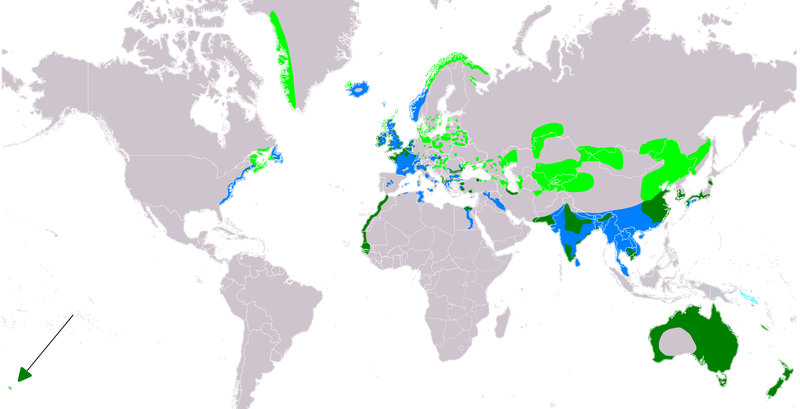The Common Sandpiper (Actitis hypoleucos) is a small shorebird or wader in the family Scolopacidae which is in the genus Actitis. This Eurasian species is a summer resident that returns from its wintering areas in April. It breeds around fresh water lakes and has a scattered distribution that extends from the Atlantic coast of Europe to Eastern Asia. Unlike most other shorebirds or waders seen on passage, it does not occur in flocks, single individuals are normally encountered. It migrates south in late Summer to spend the winter in Africa, southern Asia and Australia. Small numbers over winter in western and southern Europe.
Wednesday, 20 April 2022
COMMON SANDPIPER (Actitis hypoleucos) at Broadmeadow Estuary, Malahide, Fingal, Co. Dublin, Ireland
The Common Sandpiper (Actitis hypoleucos) is a small shorebird or wader in the family Scolopacidae which is in the genus Actitis. This Eurasian species is a summer resident that returns from its wintering areas in April. It breeds around fresh water lakes and has a scattered distribution that extends from the Atlantic coast of Europe to Eastern Asia. Unlike most other shorebirds or waders seen on passage, it does not occur in flocks, single individuals are normally encountered. It migrates south in late Summer to spend the winter in Africa, southern Asia and Australia. Small numbers over winter in western and southern Europe.
Thursday, 24 February 2022
EUROPEAN SHAG (Gulosus aristotelis) at Broadmeadow Estuary, Malahide, Fingal, Co. Dublin, Ireland
- G. a. aristotelis – occurs in northwestern European Atlantic Ocean coasts
- G. a. desmarestii – occurs in the Mediterranean Basin and Black Sea coasts
- G. a. riggenbachi – occurs in northwestern African coasts
Breeding Non-breeding - winter
Wednesday, 23 February 2022
EUROPEAN SHAG (Gulosus aristotelis) with a European Flounder (Platichthys flesus) at Broadmeadow Estuary, Malahide, Fingal, Co. Dublin, Ireland
- G. a. aristotelis – occurs in northwestern European Atlantic Ocean coasts
- G. a. desmarestii – occurs in the Mediterranean Basin and Black Sea coasts
- G. a. riggenbachi – occurs in northwestern African coasts
Breeding Non-breeding - winter
Monday, 21 February 2022
EUROPEAN SHAG (Gulosus aristotelis) at Broadmeadow Estuary, Malahide, Fingal, Co. Dublin, Ireland
- G. a. aristotelis – occurs in northwestern European Atlantic Ocean coasts
- G. a. desmarestii – occurs in the Mediterranean Basin and Black Sea coasts
- G. a. riggenbachi – occurs in northwestern African coasts
Breeding Non-breeding - winter
Wednesday, 2 February 2022
GREAT CORMORANT (Phalacrocorax carbo subspecies P. c. carbo) immature at Broadmeadow Estuary, Malahide, Fingal, Co. Dublin, Ireland
CLICK ON PHOTO TO SEE HIGHER QUALITY IMAGE
Click external link here for detailed species information
Click external link here to see distribution map and to hear calls
Sunday, 30 January 2022
GREATER SCAUP (Aythya marila) female at Broadmeadow Estuary, Malahide, Fingal, Co. Dublin, Ireland
Breeding Non breeding - winter
UND77, CC BY-SA 3.0 <https://creativecommons.org/licenses/by-sa/3.0>, via Wikimedia Commons
Wednesday, 26 January 2022
RED BREASTED MERGANSER (Mergus serrator) male at Broadmeadow Estuary, Malahide, Fingal, Co. Dublin, Ireland
Wednesday, 19 January 2022
Sunday, 16 January 2022
HOODED CROW or GREY CROW (Corvus cornix) attempting to remove a Common Periwinkle (Littorina littorea) from its shell at Broadmeadow Estuary, Malahide, Fingal, Co. Dublin, Ireland
Click external link here for detailed species information
Click external link here to see distribution map and to hear calls
The Hooded Crow (Corvus cornix) also known as Grey Crow is a member of the crow family Corvidae which is in the genus Corvus.
Four subspecies are generally recognized. Despite the fact that it is
heavily persecuted, it occurs throughout Western Asia including parts of
the Middle East as well as along the Nile Valley in North Africa. It is
also commonly encountered and has a widespread distribution in Northern, Central and Eastern
Europe. It is resident in Ireland, Isle of Man and Northern Scotland. In the rest of Britain as well as Southwestern and Western Europe, it is replaced by the
closely related Carrion Crow (Corvus corone) from which it was split in
2002 and was recognised as a separate species. Where their breeding ranges overlap, they may
hybridise. Some of the northern populations are migratory and move south for the winter.
Saturday, 15 January 2022
COMMON GREENSHANK (Tringa nebularia) at Broadmeadow Estuary, Malahide, Fingal, Co. Dublin, Ireland

Saturday, 1 January 2022
CONTINENTAL CORMORANT (Phalacrocorax carbo subspecies P. c. sinensis) immature on 1st January 2022 at Swords Sailing Club, Broadmeadow Estuary, Malahide, Fingal, Co. Dublin, Ireland
- Broadmeadow Estuary, Swords, 1st winter from 4th to 30th January 2013.
- Broadmeadow Estuary, Swords, 1st winter from 28th January to 16th May 2013, different from above.
- Scotsman Bay, Dunlaoire, adult on 1st February 2014.

Thursday, 13 February 2020
COMMON GREENSHANK (Tringa nebularia) Broadmeadow Estuary, Malahide, Fingal, Co. Dublin, Ireland
 | ||
|

























